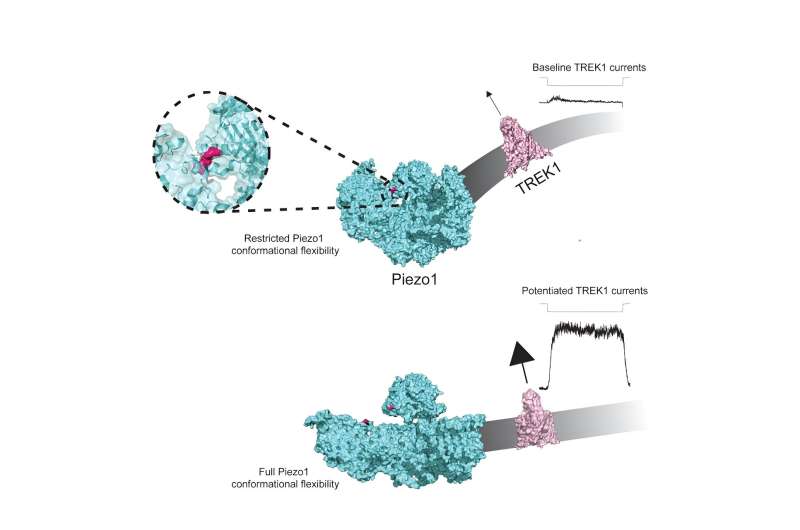The human body’s sense of touch is so important it can be found throughout the body, not just on the skin. Two tiny sensors of touch, Piezo1 and Piezo2, signal the lightest pressures and can be found monitoring the circulatory system, telling the body where its limbs are in space, and even sounding the alarm for bladder pressure. But a new study from Duke University shows that Piezo1 works differently than everyone thought.
“Due to the mechanism that we found, we can basically say this signal that comes from Piezo is also picked up by other proteins, and therefore this really expands how mechanical forces are transduced,” said Jörg Grandl, an associate professor of neurobiology at Duke. “There are other signals that a cell can work with and further understand and interpret. So it opens up a new dimension of signaling.”
The discovery of the existence and ubiquity of Piezo1 and other touch sensors was part of the 2021 Nobel Prize in Physiology or Medicine and has become a hot research topic. Scientists all over the world are a pursuing deeper understanding of these crucial bits of physiology in the hope of being able to develop new therapies for pain and itching sensations and a host of other problems.
Piezo1 sits in a depression on the cell surface that becomes more shallow in response to light pressure. This movement in turn opens up a channel in the protein to admit charged calcium ions into the cell—electrical current that is—which signals to the cell how hard it is being touched.
However, Grandl and postdoctoral researcher Amanda Lewis say in a new article appearing online July 22 in the journal Neuron, that’s not all: Piezo1 can signal its neighboring proteins even when electrical current is not flowing through the channel. It changes shape enough to signal another touch sensor, a potassium channel called TREK1, if they are sitting near each other on the cell membrane.

“Over the past 14 years since Piezos were discovered, almost everywhere in the body that some kind of mechanical sensation is happening, people have looked to see what the protein is,” Lewis said. “And the answer is almost always that it’s Piezo.”
To see whether signaling was happening just from a change in Piezo’s shape, Lewis and graduate student Marie Cronin created mutated versions of Piezo1 that were less flexible. They tried this with Piezos from fruit flies and mice. Applying gentle pressure with a micromanipulator tool, they measured responses in sensors as far away as 50 to 100 nanometers, the size of several proteins.
Having seen this, they turned their attention to where Piezo1 and TREK1 are located on the cell membrane and found that they occur more closely than would be randomly possible. Importantly, they don’t bind to each other to share signals, but they stay close.
“This is termed ‘conformational signaling,'” Grandl said. It’s a change in shape, not a flow of ions that sends the signal. “It’s not completely unheard of, there are two other ion channels that have previously been described to do this. We believe this is the third one, but it’s different.” The other two conformational signals came from proteins binding directly to the sensor.
The researchers’ next step is to figure out just how that conformational signal is sent from Piezo1 to TREK1. It likely involves a change in the cell membrane, but has yet to be measured.
“I think this expands the way we think about how Piezos are playing all of these diverse roles in the body,” Grandl said. “The assumption has always been that the way Piezos are regulating blood pressure and light touch and bladder sensation is through their ionic channel.”
“Every new biological mechanism that you discover opens up new avenues for maybe using them as treatments against the many diseases that are related to mechanical sensation,” Grandl said. “The most prominent ones for sensing are mechanical pain and chronic itch, which is a huge clinical problem.”
More information:
Amanda H. Lewis et al, Piezo1 ion channels are capable of conformational signaling, Neuron (2024). DOI: 10.1016/j.neuron.2024.06.024
Citation:
Discovery of Piezo1’s new signaling mechanism may aid search for better pain and itch treatments (2024, July 22)
retrieved 23 July 2024
from https://phys.org/news/2024-07-discovery-piezo1-mechanism-aid-pain.html
This document is subject to copyright. Apart from any fair dealing for the purpose of private study or research, no
part may be reproduced without the written permission. The content is provided for information purposes only.

